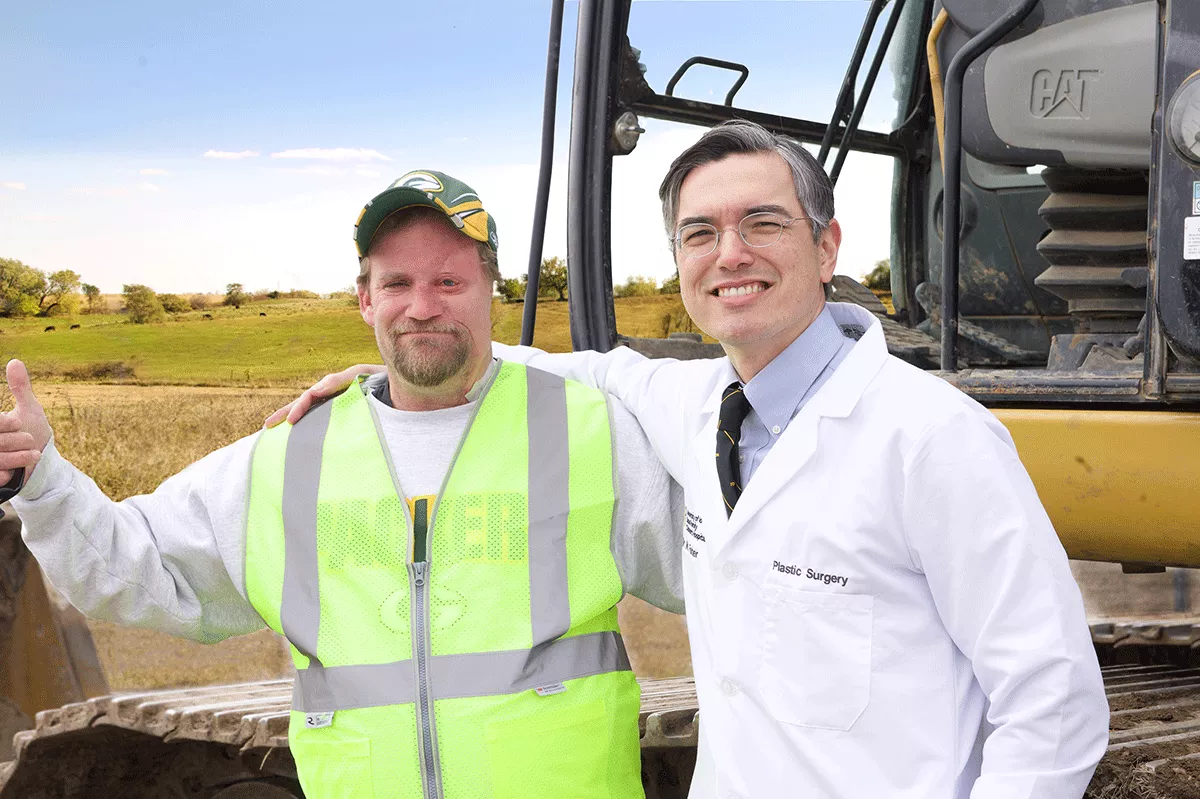Reconstructive surgery helps man recover from flesh-eating disease

Micah Smith was racing his daughter through the yard of his home in Donnellson, Iowa, when he tripped, colliding with an old cast-iron water pump. He thought he’d broken his cheek bone, so he wasn’t too concerned about a small cut near his left eye.
“I was in a lot of pain, and my eye had swollen shut. And I had a fever, so I went to a local emergency room,” says Micah. “They told me to come back when the swelling had gone down.”
Within hours, Micah’s temperature spiked. His family took him back to the emergency room, where he was rushed to University of Iowa Hospitals & Clinics in an ambulance.
Orbital cellulitis, a dangerous infection in the soft tissue of the eye socket, had invaded Micah’s body through the cut on his cheek. As the infection spread across his face, it became necrotizing fasciitis, a life-threatening bacterial skin infection also known as “flesh-eating disease” that kills soft tissue.
“These infections can overwhelm the body, leading to shock and organ failure,” says Mark Fisher, MD, UI clinical assistant professor of surgery. “Without aggressive treatment by his initial multidisciplinary team, he would not have survived.”
Surgeons removed most of the skin and fat covering the left side of Micah’s face, from the side of his nose to the back of his head—including his eyelids, ear, and portions of his scalp and neck—to stop the infection. Micah then spent four weeks in an intensive care unit.
With the infection eradicated, the next step was to rebuild the left side of his face. Micah met with Fisher, a plastic surgeon at UI Hospitals & Clinics who would lead his reconstructive team.
Since November 2014 Micah has had nearly 20 reconstructive surgeries, including a microsurgical free flap to move a section of his right thigh to his face, replacing the lost soft tissue and skin. In the procedure, a section of soft tissue, along with its arteries and veins, is completely separated from its donor location and transferred to a new site, where it is connected to an existing blood supply.
A team of surgeons including Fisher; Erin Shriver, MD, oculoplastic surgery; and Doug Henstrom, MD, otolaryngology, worked together to reconstruct the complex functional portions of Micah’s face. Skin grafts were used to create eyelids, and nerve grafts were implanted into residual facial muscles to restore eyelid movement. Additional surgeries have sculpted and refined the flap to create the proper shape and resurface skin texture.
“Micah is an amazing man,” says Fisher. “He’s returned to his life and supports his family again as a heavy equipment operator.”
Micah, now 41, credits the unyielding support of his family and the care he’s received from UI Hospitals & Clinics for his recovery.
“I just want to say thank you. I want to thank everyone who took care of me,” says Micah. “Because of them, I lived to see my grandchildren being born.”